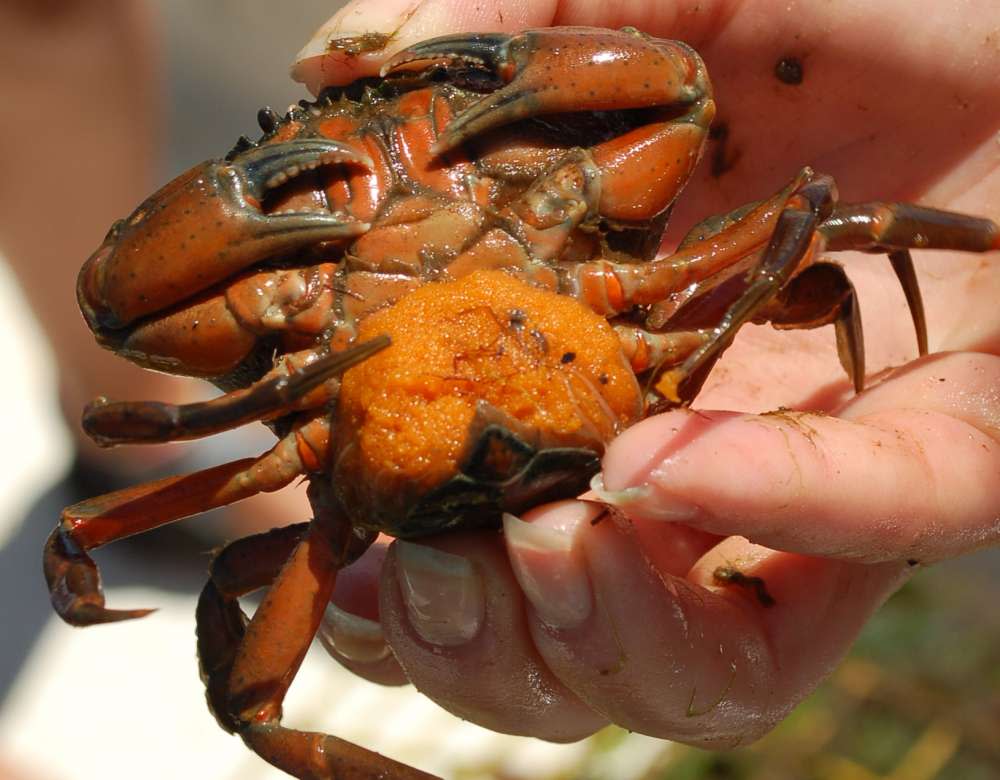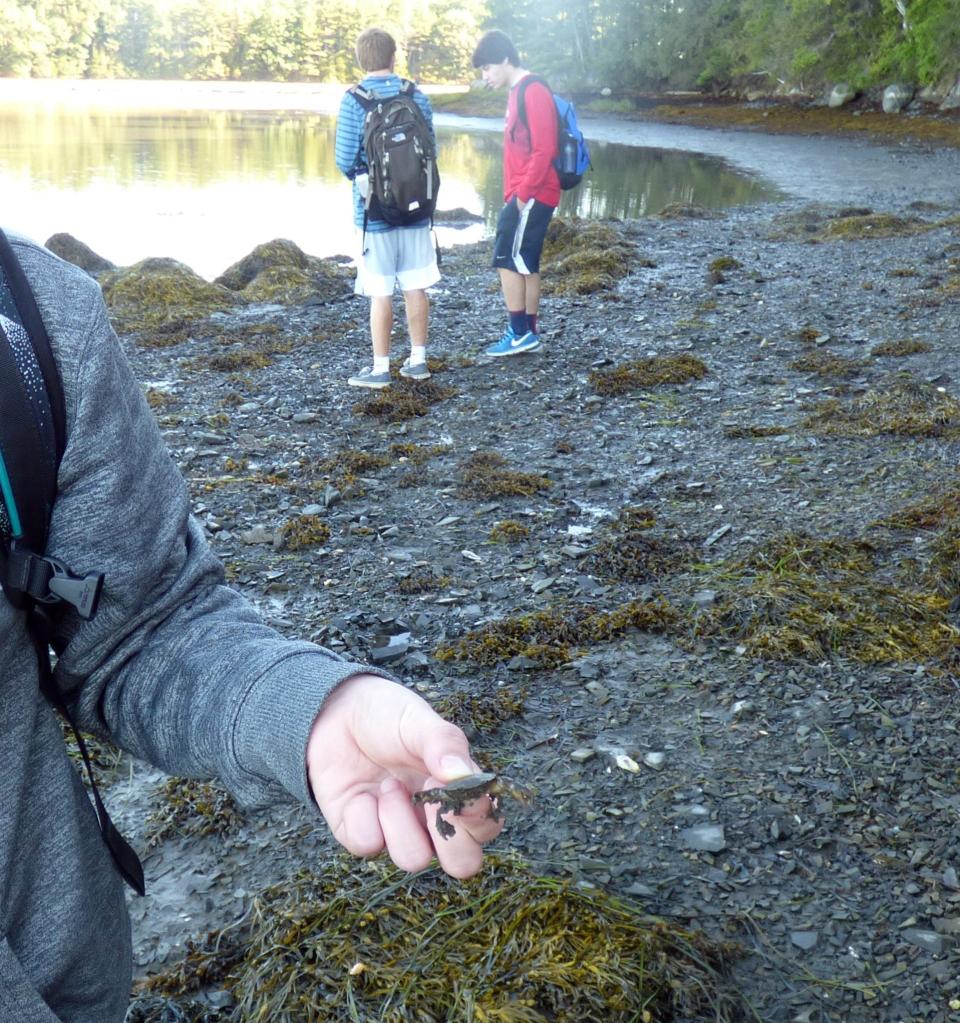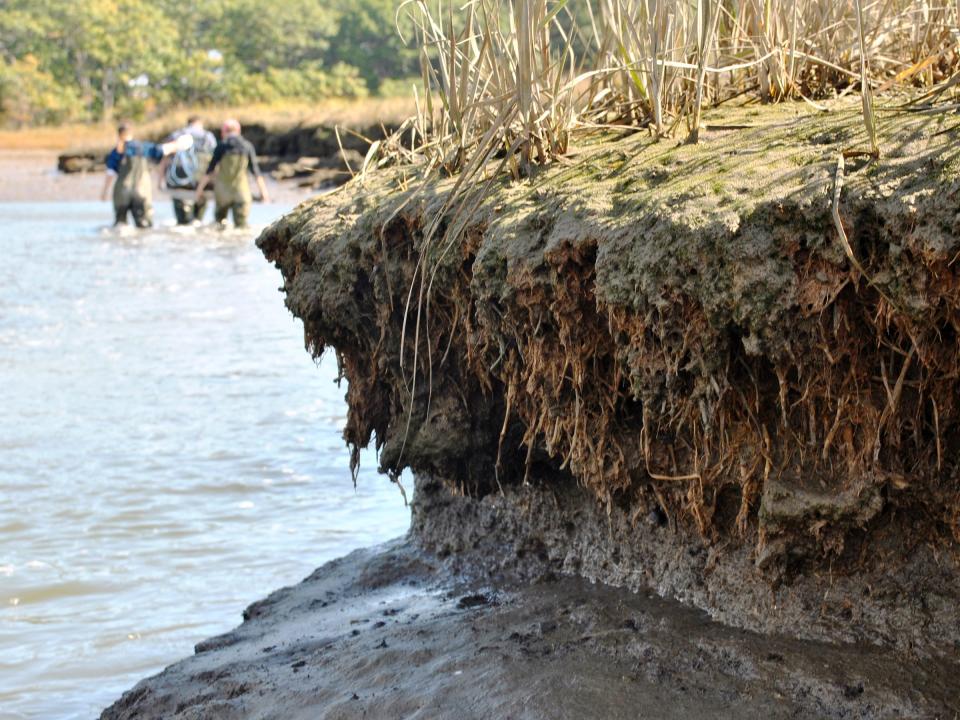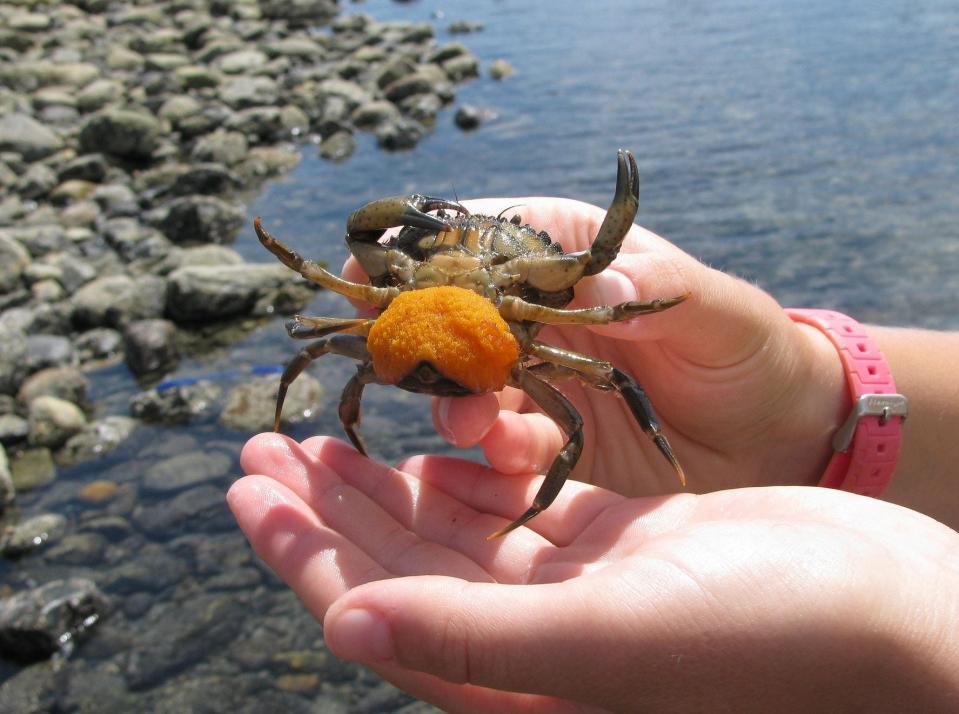Green crabs: We can't beat them, so let's eat them: Nature News

I recently attended the annual meeting for the Great Works Regional Land Trust. The keynote speaker was Jason Goldstein, Research Director at the Wells National Estuarine Research Reserve at Laudholm Farm. Dr. Goldstein focused primarily on the importance of tidal waters, and why we need to conserve the shoreland habitats that border these waters. During the talk he also touched on invasive green crabs who burrow into and contribute to the erosion of salt marsh banks - news to me - I had always thought those holes in the banks were natural.

When my kids were little, one of their favorite pastimes was to go to the beach and look for green crabs - they were everywhere. So, green crabs have been a part of my life for as long as I have lived in Maine (over 25 years - but I’ll never be a native). Even though green crabs have been in Maine for more than 200 years, they aren’t native either. The European green crab (Carcinus maenas) was introduced to New England back in the early 1800s, most likely arriving in the ballast of ships carrying cargo from Europe to the United States. Since then, they spread up the East Coast decimating the soft shell clam industry as well as preying upon or outcompeting a variety of native intertidal invertebrates. They reached the West Coast in the late 1980s and are wreaking similar havoc from San Francisco north. In fact, the IUCN has listed the green crab as one of the 100 worst invasive species.
I think most of us who live along the New England coast, and especially those who like to clam, know that green crabs are a problem for soft shell clams because they can swim (unlike our native crabs) and can therefore make it out to the tidal sand flats to get to the clams between tides. What I was unaware of, until Dr. Goldstein’s talk, was just how much damage green crabs are doing to salt marshes.

I love kayaking around in salt marshes, especially during mid to low tide. There are always so many little hidden nooks and crannies revealed as the tide goes out. To me the edge of the salt marsh is always crumbling into the ocean. This is part of the natural cycle of a salt marsh, as sea levels rise the sea-edge erodes while the landward side builds (the inward movement of salt marshes, however, is stalled when human development and paved, hard, surfaces line the coastline). Green crabs further erode salt marsh banks by burrowing into the peat. Peat (the soil a salt marsh is built on) is made of slowly decomposing plant matter, full of the tangled roots and bodies of salt marsh plants, making it very spongy. This is a good thing–this sponginess helps protect our coastlines from flooding. We need to keep our salt marshes as healthy as possible for this and a host of other benefits they provide like nursery to juvenile fish, filter, habitat etc.
Scientists at the Wells Reserve measured the strength of peat in three salt marshes as well as the presence of green crab burrows and found that green crab burrowing activity is weakening salt marsh creek banks, causing them to erode. The researchers used CT scanning to inspect peat samples and found green crab burrows (up to 1 meter in!) running through the peat cores creating a Swiss cheese effect in the peat. According to Jacob Aman “Green crab burrowing activity damages the roots and rhizomes of grasses that would otherwise hold the salt marsh together. Sites with more green crabs had less living biomass (organic material) in the upper marsh peat. Creek banks impacted by green crabs were more erodible than vegetated creek banks.” (Green Crabs Damaging Maine Salt Marshes, Wells Reserve 2016). More recent research is finding that the severity of impact of green crabs can vary depending upon location, but all are agreed that finding ways to curb the green crab population explosion would be a good thing.

Aside from trapping and exclosures, one fun way to help control green crab population growth is by promoting green crab cuisine. They are delicious when prepared with finesse. In Europe soft-shell green crabs are an important fishery and this idea is starting to take hold in the States. Blue crabs are beginning to move north as ocean temperatures warm, but most researchers aren’t as worried about these as green crabs because the blue crab already has an important fishery along the Atlantic coast. So, one small step you can take to help-ask your local restaurant to experiment with green crab cuisine.

Susan Pike, a researcher and an environmental sciences and biology teacher at Dover High School, welcomes your ideas for future column topics. Send your photos and observations to spike3116@gmail.com. Read more of her Nature News columns at Seacoastonline.com and pikes-hikes.com, and follow her on Instagram @pikeshikes.
This article originally appeared on Portsmouth Herald: Green crabs: We can't beat them, so let's eat them: Nature News

